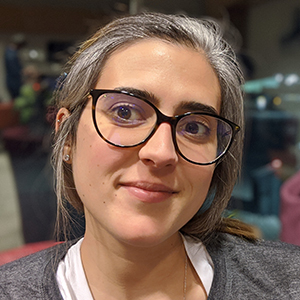In this Article

To start a career as a medical assisting, you can take a certification program or earn a two-year degree. Although formal education isn’t always required, most employers will expect employees to have completed both coursework and clinical experience.
Medical Assisting Programs
Most medical assistant programs consist of a balance of administrative and clinical education. Certificate programs usually take a year, but there are programs that are as short as a few months. Another route to a career in medical assisting is earning an associate degree.
| Certificate or Diploma | Associate Degree | |
|---|---|---|
| Class Offerings | ● Physiology and pathology ● Pharmacology ● Lab techniques and procedures ● First-aid ● Office practices ● Medication administration | ● Human anatomy and physiology ● Medical terminology ● Lab techniques ● Administrative procedures ● Pharmacology ● Medication administration |
| Time to Complete | Typically nine months to a year | Typically two years of full-time study |
| How Programs Compare | These programs are generally offered at vocational schools, community colleges, or specialty schools. Students usually have a shorter period of clinical training than students pursuing an associate degree. | These programs are typically offered at community colleges and include substantial clinical and administrative education and training. |
Externships and Internships
While most medical assistant programs educate and train students in clinical and administrative skills, some focus more on one side of the profession. Regardless of your program, you’ll get hands-on clinical experience in a healthcare setting.
Clinical experience is crucial as it prepares you to work with patients and clinicians. To gain clinical experience, you may pursue an internship or an externship. An internship is work experience offered by an organization for a set period of time. Internships can last for a quarter or a semester or be completed over the summer. An externship is generally the same as an internship but for a shorter period of time. Some are just for a day, while others can be as long as several weeks or a couple of months.
Both types of hands-on training will give you the clinical experience you need for a career as a medical assistant. You can expect to learn:
In general, a medical assistant program will help students land a clinical training stint. Danielle Sadighi, founder of the American Medical Certification Association (AMCA), says schools have an incentive to help students get an internship. “Schools look to align with the hospitals so that they can feed (program graduates) into doctors’ offices and hospitals,” she says.
Certification
Medical assistants aren’t licensed and certifications not strictly required, but most medical assistants earn a certification for two reasons: this type of credential demonstrates your knowledge and expertise, and most employers expect medical assistants to have one.
There are seven basic certifications to choose from. The Certified Medical Assistant (CMA) and the Registered Medical Assistant (RMA) are the most common, but the one you pick could depend on where you hope to work. That’s because some medical institutions prefer a particular certification. Many schools also prepare students for a specific certification, so you’ll want to make sure your school and medical community preferences sync up.
What to Look for In a School
There are many medical assisting programs to choose from, so what should you look for to make sure you choose the best program for you?
Type of Program
First, decide what kind of program you want to attend—certificate, diploma, or associate degree. Then look at schools. You’ll find medical assisting programs at:
Accreditation
Make sure your school and program are accredited. This means they’ve met the education standards deemed necessary to prepare a person for their career.
Accreditation also is important because:
Flexibility and Convenience
Medical assisting programs can offer a lot of flexibility and convenience and can be ideal for students who have responsibilities outside of school. This flexibility applies to classroom and online programs and can include:
Job Placement/Career Counseling
Find out if the schools you are interested in offer job placement or help finding a job. Some schools have relationships with local hospitals, clinics, and physician’s practices.
You can also use your medical assistant program to make connections and network so you’ll have contacts when you graduate.
Online Medical Assisting Programs
There are many online medical assisting programs, and they’re a great option for people who are trying to manage work or other responsibilities. But these programs are really hybrids because you’ll need to attend hands-on, clinical training in-person, whether it’s in a school lab, or at a local hospital or clinic.
Applying Previous Experience or Education Toward a Program
Sadighi says that in some cases, previous education and experience can count toward a medical assisting education. As an example, she says that a teenager who completes a health sciences program in high school may be able to transfer those credits to a community college and apply anywhere from three to 24 credits toward a medical assisting program.
In general, however, post-secondary medical assisting programs don’t give credit for previous education outside of medical assisting or waive any requirements based on previous experience, Sadighi says.
Salary and Career Advancement
Many factors can affect your salary, including where you live, your experience, and whether you have certifications.
You can advance your career by specializing as a medical assistant and earning credentials. In fact, the BLS says medical assistants who have a credential and can work with electronic health records (EHRs) may have an edge in the job market.

Written and reported by:
Hana LaRock
Contributing Writer

With professional insight from:
Danielle Sadighi
Founder, American Medical Certification Association (AMCA)